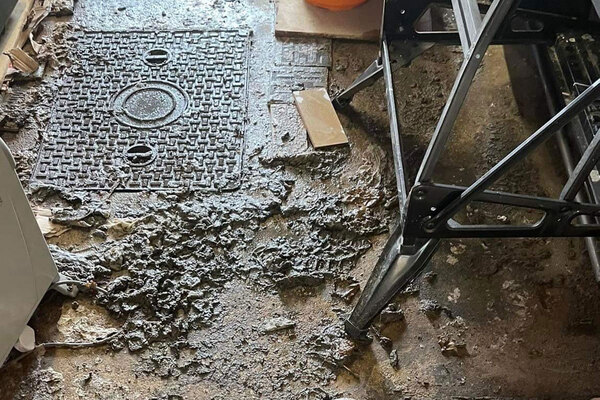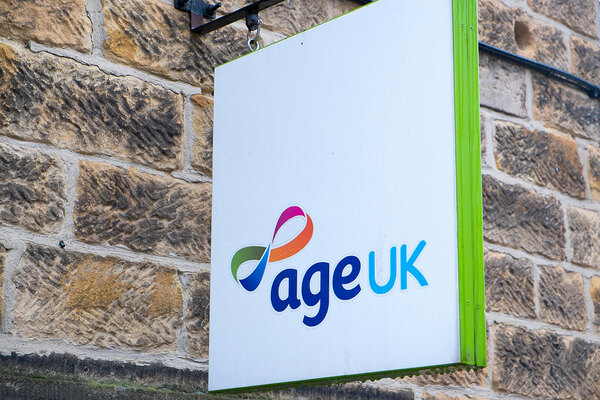You are viewing 1 of your 1 free articles
Combined scope
A project in Wales could pave the way for housing to save the NHS millions. Jess McCabe reports
Video:
Features style

How to win health commissioner friends and influence the NHS?
If this is the question that social landlords are asking themselves, then the answers they seek might be found in a small converted office block in Gwent, Wales, which has been converted into flats.
Here at Lion’s Court, Jason is one of three NHS patients who are being provided with what the health service calls ‘continuing care’ – a kind of step-down from hospital or living in a mental health facility. Unusually, Jason is living not in residential care or a hospital ward, but in a shared flat, let at social rent to him by Melin Homes.
Jason moved in on 1 December last year from a hospital where he had been receiving treatment for substance abuse. Although he still needed some assistance – and a support worker is in the flat 24 hours a day – the hospital setting, where Jason had to come back for a 6pm curfew, was no longer suitable.
“We’re not after your money. We’re not after your decision-making responsibility, we’re definitely not after your accountability.”
Mark Gardner, chief executive, Melin Homes
Now, Jason is free to come and go as he pleases. He can stay at Lion’s Court as long as he wants, but Jason hopes to move again within 12 months. Jason is a bit reluctant to talk about the impact of moving to Lion’s Court on his life and his recovery, but he calls the change ‘amazing’.
Ongoing care
This is possible as part of a ground-breaking collaboration between the housing sector, local authorities and the area’s health board, meant to provide more suitable and local accommodation for patients in continuing care.
The project is called In One Place. As well as Melin, it brings together seven more social landlords, five local authorities and the Aneurin Bevan University Health Board (see box).
Lion’s Court is a test bed for the In One Place model. In its first year, Melin Homes predicts, it will save the NHS about £150,000. The savings come from moving the three residents out of hospital and a ‘low secure’ mental health setting, and into regular accommodation – where the NHS is only paying for the care. In 2012, the average cost of these ‘all inclusive’ packages to the health board was £200,000 a patient, making the savings an estimated £50,000 a person.
Seven more In One Place projects are lined up for the 2015/16 financial year, which involve housing 33 more patients who remain in NHS ‘continuing care’. Savings for the NHS? A predicted £1.65m a year. Cost to the NHS? £208,000 – entirely made up of employing a couple of staff to manage the programme.
Who is taking part?
Councils:
- Blaenau Gwent
- Caerphilly
- Monmouthshire
- Newport
- Torfaen
Housing associations:
- Bron Afon Community Housing
- Linc-Cymru Housing Association
- Melin Homes
- Monmouthshire Housing Association
- Newport City Homes
- Seren Group
- Tai Calon Community Housing
- United Welsh Housing Association
NHS:
- Aneurin Bevan University Health Board, which covers the areas of Blaenau Gwent, Caerphilly, Monmouthshire, Newport and Torfaen.
Social landlords have been courting the NHS, especially since the coalition government redrew the structure of the health service and how it is commissioned. But, as Inside Housing reported last week, the results have been mixed. Communication between health and housing is often poor, and co-operation has therefore not followed.
So why has this project caught on, when others have failed?
In One Place is the brainchild of Mark Gardner, chief executive of Melin Homes, and his theory is simple. But it might not go down very well in some corners of the housing sector.
The answer is – don’t look to the NHS as a cash cow. ‘There’s lots of money in health,’ Mr Gardner explains. ‘But there’s none spare. And the backdrop was, how do I engage when health is trying to save £1m a week?’
‘We stand a really good chance of reducing the burden on the NHS,’ Mr Gardner continues. ‘But a key message [to persuade the NHS] was, we’re not after your money. We’re not after your decision-making responsibility, we’re definitely not after your accountability. But we’re on the patch.
“We used that message as the gauntlet that needed to be picked up, and said, we need to have grown up conversations with one another.”
Mark Gardner, chief executive, Melin Homes
‘We have accommodation that we can adapt, but we also build accommodation.’
There are also benefits to the individual to receiving NHS care close to friends and family, rather than in an ‘out of county’ placement.
‘It’s better for the person, it’s better for governance reasons, you’ve not go to go up and down the country to check on what’s been delivered from a care perspective because it’s local, and it’s more cost effective,’ points out Joanne Lewis-Jones, who works full-time as an In One Place programme officer.
Low cost
And the housing associations involved aren’t trying to do anything that stretches them too far outside their comfort zone. ‘As far as we’re concerned, we are just looking at providing our standard units of accommodation,’ says Mr Gardner.
This collaboration seems like such a simple idea - but it has taken a surprisingly long time to get to this stage.
Mr Gardner explains that the idea for the project dates back to 2011. The chief executive was an associate member of the Aneurin Bevan University Health Board, which is responsible for commissioning healthcare for the people of Gwent. At that time, its chief executive was Andrew Goodall, who has since moved on to become head of NHS Wales. It was a rare opportunity for a housing person to talk directly to a health person, and come up with a plan to work together.
‘Andrew at the time said, “My big problem is continuing health care.” Which is high cost, all inclusive, normally out of area placements. How do we start to provide local solutions that increase quality in care, and if it saves money it’s a bonus,’ Mr Gardner recalls.
A joint conference was set up, and the then housing minister and health minister in Wales attended. ‘And they were both saying, “What are you doing here?” They don’t normally spend much time on the stage [together]. It was, OK, you’re all talking about cooperation and working together, isn’t it about time you did something about it. We used that message as the gauntlet that needed to be picked up, and said, we need to have grown up conversations with one another.’
And so the seed was sown for In One Place. The next step, and the reason that it has taken years to get up and running, was getting all the partners on board, and to bring together what are two different universes: the health service and housing.
Social landlords were already keen to work with the NHS, so it was easy to get the local housing associations and local authorities involved. ‘Everyone had tried at one stage or another to speak to health,’ Mr Gardner says. But thus far, nothing had stuck.
In 2011, a conference was organised that brought together the two worlds.
Conversations with the health service made clear that approaching the NHS with individual projects, or as individual housing providers, wasn’t the best approach.
And so the In One Place project was born. The concept is for In One Place, which is run by two members of staff, to work with the health board to anticipate current and future need for continuing care. Some of the six projects under way will involve converting existing homes, while others will involve building more homes.
These homes will be paid for using housing grant as any normal development, and rented out by the social landlords involved to patients identified by the health board at normal social or affordable rents.
So far, only Lion’s Court is up and running with tenants in place, but the first purpose-built block is due to open in June or July. The design of the homes won’t be any different to others built by social landlords – and the new tenants will be receiving care for mental health issues or related to learning disabilities.
The initial success of In One Place has also opened the door for future projects in which housing providers can co-operate with the NHS. For example, it is working on a project to bring patients back into the county who are being treated for brain injuries. Another initiative will see housing provided to young people with learning disabilities when they attend college out of the county, so they can maintain their independence.
But Mr Gardner says that the bigger potential is to roll out the In One Place model to the rest of Wales, or even the rest of the UK.
The project already looks set to save the local health board £1.65m, applied to just 33 service users.
‘If that rolled out across the rest of the UK - and there’s no reason why not - then you’re talking massive amounts of money. There are recurring cashable savings,’ Mr Gardner says. ‘That’s what we’re hoping for. Why can’t you do this? What’s the reason? There is no barrier.’








